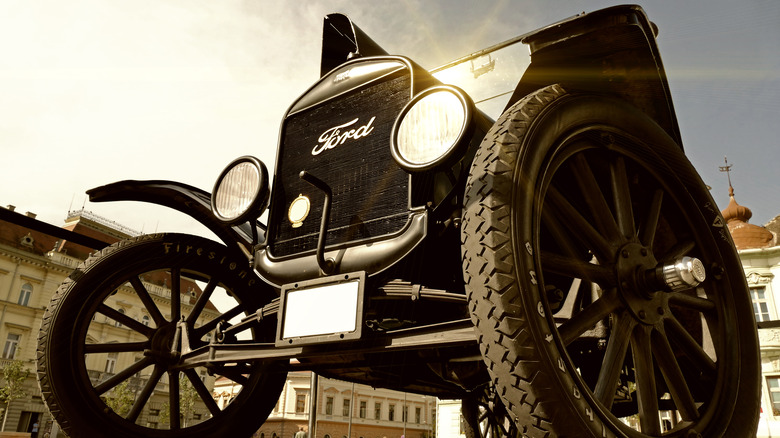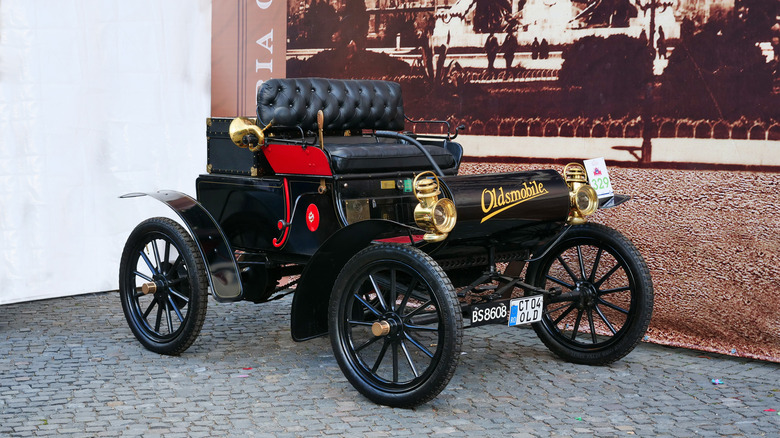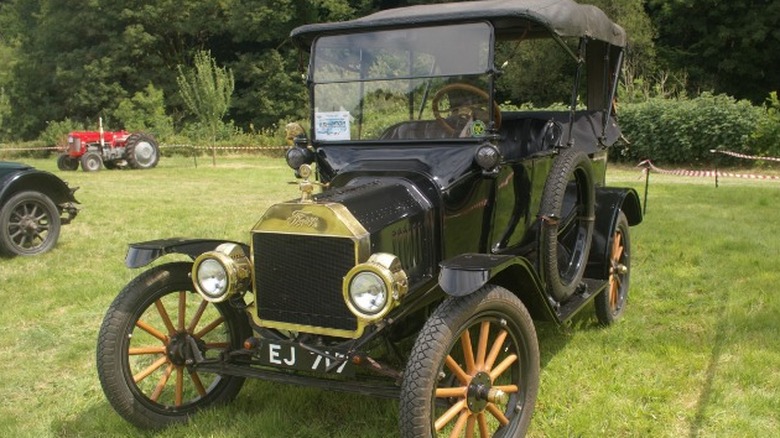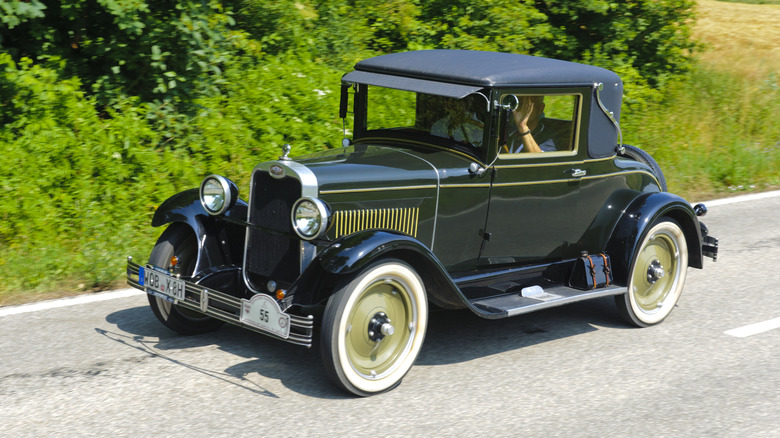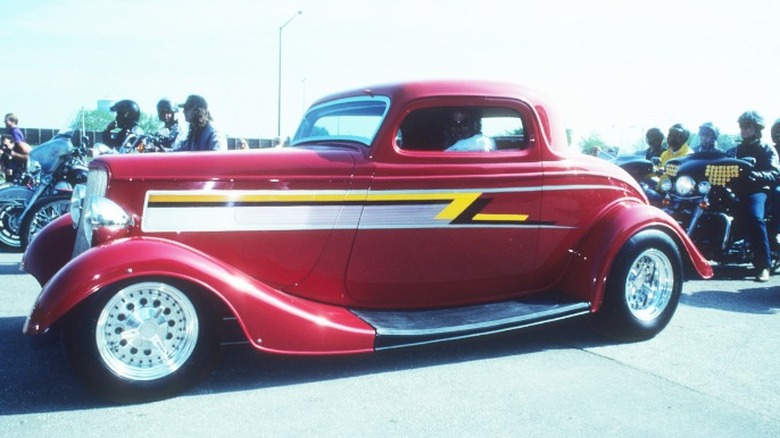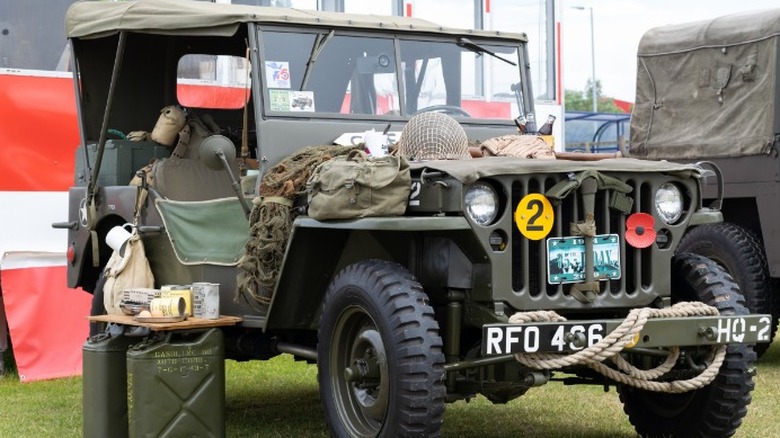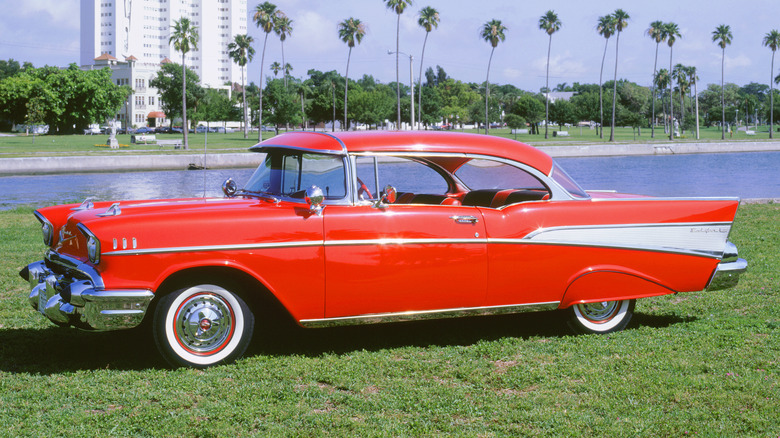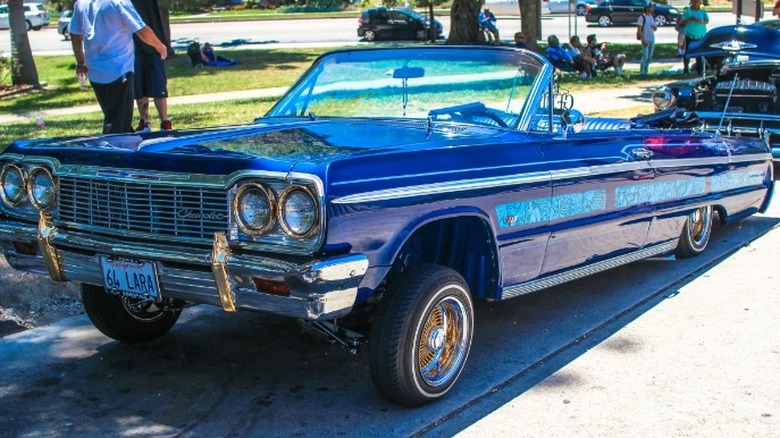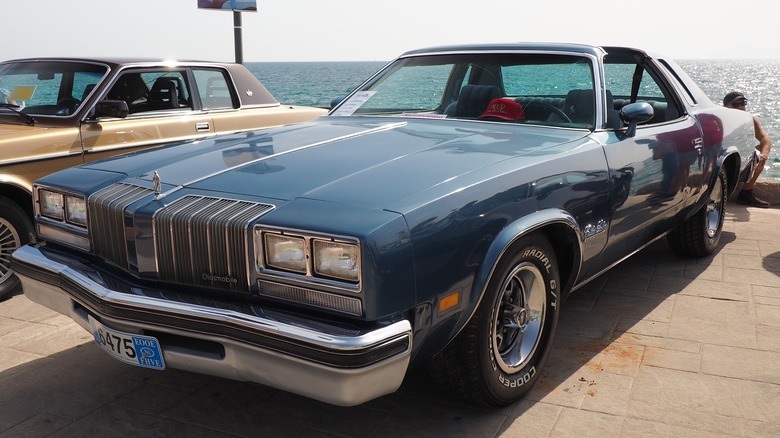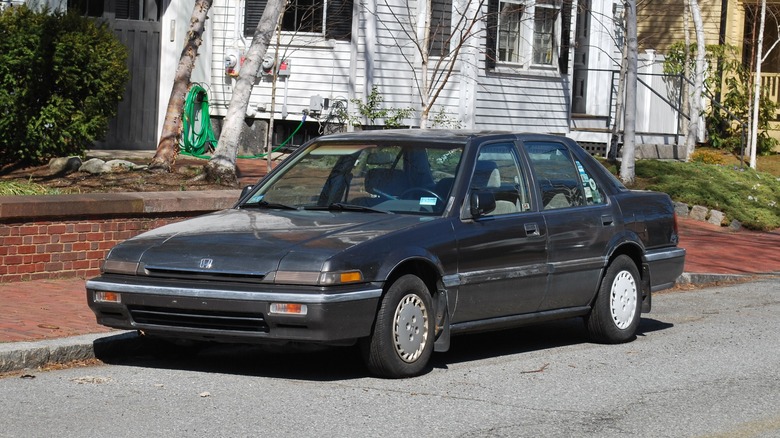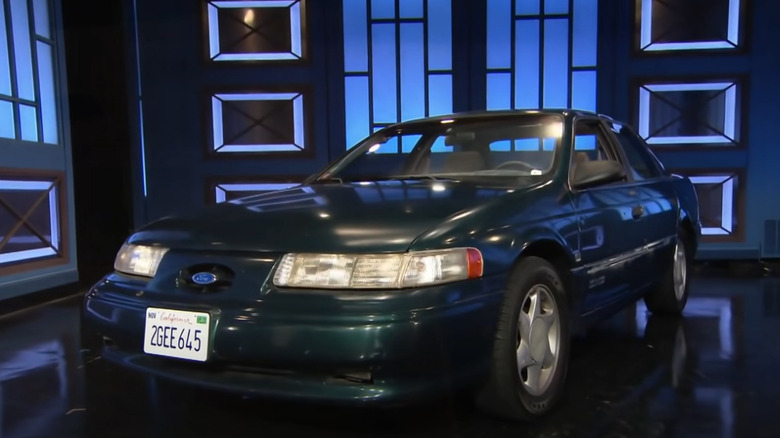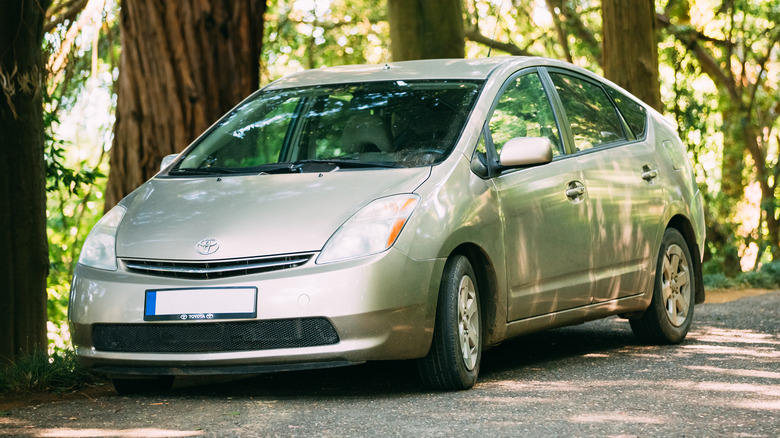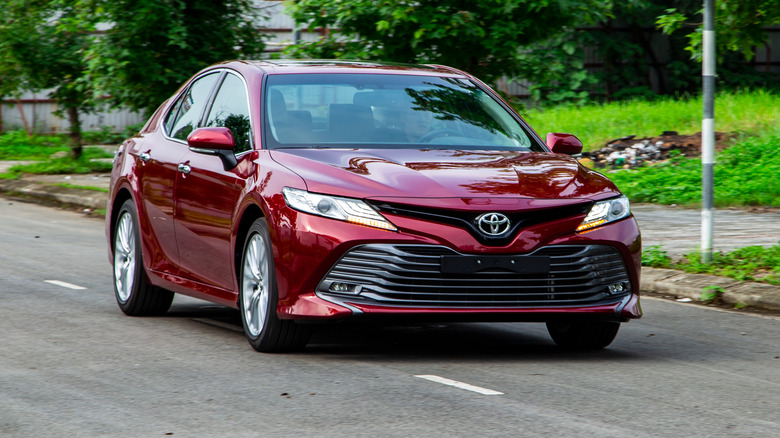The Most Popular Cars From Every Decade
In the last 120-plus years, we have made an awful lot of cars. The vast majority of them have been rusted, recycled, and crushed to oblivion, but still many remain. Some are aging hulks lost under piles of detritus in country barns, while others sit gleaming under the lights of museums across the globe. However much we might like to preserve antique and classic cars, not all of them were popular in their day. Some of the most loved cars of the past were sales failures. Anyone sporting a classic Edsel can tell you about that.
To take a look back through the decades to determine what car was the most popular is not necessarily a straightforward endeavor. Leaders of sales charts is a good metric, but that leaves out the cultural impact a particular model may have had. Looking for the car most often featured on posters displayed in teenagers' bedrooms may signify a cultural impact, but that is too limited if nobody was able to buy them. Therefore, this is a list of cars from each decade since 1900, taking into account the top-selling cars, along with some of their cultural and societal values that had an impact in a meaningful way. Furthermore, to tip the hat to those aspirational models from low-volume manufacturers that become hero-like cars to so many, honorable mentions shall also be made. So, here is a look back over the most popular cars from the last 12 decades.
1900-1909: Oldsmobile Curved Dash
One oft-overlooked contribution of Ransom Olds is his implementation of the first assembly line in auto manufacturing, due to the fact that it was not mechanized or automated. However, this assembly line is where the first mass-produced American car was made: the Oldsmobile Curved Dash. This car more resembled a carriage sans horse than any modern automobile. The Curved Dash became the best-selling car in America, with Oldsmobile producing up to 5,000 units per year selling for $650 (via Henry Ford Museum). Most car makers of the day catered to the wealthiest of clients, while the Oldsmobile was simple and relatively affordable. The GM Heritage Center keeps a 1903 model on display; it's powered by a single-cylinder engine producing 4 horsepower with a chain drive.
1910-1919: Ford Model T
It is hard to understate the impact of the Ford Model T on industry, culture, and society around the world. Introduced in 1908, the Model T was one of the first mass-production vehicles (via Ford). Henry Ford brought an idea he had seen in slaughterhouses and implemented it in auto production (via ThoughCo.). To make his factory work, he also had to integrate standardized parts. Previously, most cars and their parts were built by hand, and parts were custom fit to each car (via PBS). With the Model T, the parts were mass-produced to the same specifications so that all the parts would fit on all the cars the same.
The Model T was a sales success. Henry Ford, however, still wanted to do better. He wanted his car to be available to everyone, and sold at a price that the regular man could afford. By continually tweaking the process, Ford managed to get the price of a new Model T down to just $260, according to Ford. Furthermore, he did this while paying workers a wage of $5 per day, an unprecedented amount in 1914.
1920-1929: Chevrolet National AB
While Ford continued to dominate auto sales well into the '20s, it was in 1928 that Chevrolet finally surpassed Ford with the most units sold, putting into full swing a rivalry that continues today. At the time of its debut, the Chevrolet was thoroughly modern, offering four-wheel mechanical brakes, as opposed to Ford's two-wheel only brakes, and a frame that would accommodate an all-new, 6-cylinder engine for the 1929 model year (via Hagerty).
Honorable Mention: Duesenberg Model J
Duesenberg created the most opulent American cars of its day, but matched the high level of luxury with equivalent power. The Model J is the pinnacle of automotive quality before the Depression, and it came with elegant coachwork, finely trimmed interiors, and a 250 horsepower, straight-8 (via Hagerty). They were the cars of movie stars and bankers. Actor Gary Cooper owned a later Model J with a supercharged 400 horsepower engine. Duesenbergs remain highly valued and collectible to this day.
1930-1939: Ford Roadster V8
Ford debuted the new flathead V8 in 1932, and it became an instant success (via Popular Mechanics). At the time, V8 engines were reserved for higher-end cars like Cadillacs and Oldsmobiles, and that made Ford's decision to produce a low-cost V8 advantageous. Despite the dismal economic conditions of the time, the new Ford sales went gangbusters. These new Fords were popular for their relatively high performance, making them popular choices for gangsters of the day such as John Dillinger and Bonnie and Clyde. Since then, the 1932 Ford has become a favorite of the hotrod scene. "Deuce Coupes" are common on the car show scene, and made famous as the automotive mascot for the Texas band ZZ Top (via Fuel Curve).
Honorable Mention: Cadillac V16
Cadillacs from the beginning were known for being luxury cars. By the '30s, the company's reputation was without question, but management wanted to increase power to stay ahead of the competition. The natural thought was to add cylinders and, thus, the V16 was born. Cadillac cars had grown to the size of a modern Suburban, and needed the power to move them. The V16 offered 165 horsepower with 300 pound-feet of torque but, more importantly, was smooth as silk (via MotorTrend). While not many of these Depression-era monsters were built, they are notable for being the only American car to ever have a V16 (via TopSpeed).
1940-1949: Willys MB
Most know the '40s were a turbulent time on this planet. World War II loomed large for the better part of the decade, and all automobile construction ended for the duration of the war. To be clear, passenger cars for consumers stopped being made, but vehicle production ramped up (via The National WWII Museum). Perhaps the most iconic and recognized vehicle from this time is the Willys MB, commonly referred to as the Army Jeep. Originally designed and produced by American Bantam, the MB proved to be an invaluable asset to soldiers as it traversed dangerous terrain and drove our boys to victory, defeating fascism in the face of overwhelming odds. American Bantam did not have the production capacity to keep up with the demand of the War Department, so the plans were given to Willys and Ford, who collectively built 643,000 units for the military (via National Museum of WWII Aviation). Being light, reliable, and with a reliable four-wheel drive, the MB was the symbol of American power for many decades.
Honorable Mention: Kaiser Special
With all efforts of industrial production set forth to support the war effort, not only were passenger cars not built, none were designed, either. Our best engineers were figuring out how to build stuff better than the Nazis. So, in 1947, the Kaiser-Frazer Corporation debuted the Kaiser Special, the first all-new car design since the war ended (via AllPar). The other manufacturers had been building pre-war designs while working on new cars, and trailed the Kaiser by a couple of years.
1950-1959: Chevrolet Bel Air
The 1950s are a commonly idealized period in American history. It is a period of great technological and societal advancement. One of the most iconic images of the era is that of a 1957 Chevrolet Bel Air. It may not have dominated sales of the time, but it has since dominated memories. MotorTrend first named the Bel Air "Car of the Year" in 1955, praising its good handling and available V8 engine. Further praise for the styling is lavished on what they call the Tri-Five: the '55, '56, and '57 Bel Air models. These three years represent the best of styling from the atomic age, and the lines have aged remarkably gracefully. Today, the Tri-Five are among the most coveted classic American cars. Restored and modified Bel Airs are a staple of classic car shows, and they show up often in popular culture, such as the 1955 model in the George Lucas movie, "American Grafitti."
Honorable Mention: Chevrolet Corvette
Seeing an opening in the marketplace for an American roadster to compete with the influx of European offerings at the time, Chevrolet released the fiberglass-bodied Corvette in 1953, starting what would become an American institution unto itself (via CNET). The impact of the Corvette was dramatic, and Chevrolet has dominated its place in the market ever since, with now eight generations of cars defining the American sports car.
1960-1969: Chevrolet Impala
While Impala is one of the longest-running nameplates of American cars, it hit a record in 1964, selling 1,074,925 units, the most of any single model up to that year (via Best Selling Cars Blog). Throughout the decade, the Impala would remain one of Chevrolet's best sellers, and an extremely popular car overall. Some of the most desirable cars of the period were convertible Impalas, thanks, in part, to the inclusion of a '64 Impala in the popular hip-hop lyrics of "Boys In Da Hood" by Eazy-E in 1987. Impalas have since become a favorite of lowrider culture, equipped with wire wheels, colorful and iridescent paint, and hydraulics to make them hop.
Honorable Mention: Ford Mustang
Mustang fans might argue their favorite car is obviously the most popular of the '60s. However, despite sales of the Mustang being a runaway success and spawning the pony car movement, Ford only moved about half as many of these cars as the Impala in 1965, according to Mustang Specs. Still, the impact on culture and the auto industry has been dramatic. The Mustang changed the perception of what a small, fun, and capable American car could be, and set off rivalries among American automakers that are yet to be settled.
1970-1979: Oldsmobile Cutlass
The '70s were a time of change for the auto industry. A growing roster of safety and emissions laws, coupled with a fuel shortage, changed the manufacture of cars as well as the buying habits of consumers. Regardless, through it all, the Oldsmobile Cutlass dominated the sales floor. Although it had been around since 1961 as the F-85 Cutlass, it was the '70s when it took off (via Hemmings). Production levels of the Cutlass rose steadily throughout the decade, with the later downsized models surpassing 630,000 units in 1977. It was the best-selling car from 1976 through 1983, according to Jalopnik. Anyone living during this time can attest to how ubiquitous these cars were, and likely knew somebody who owned one, if not themself. In so many ways, the Cutlass is the '70s.
Honorable Mention: Lamborghini Countach
The Lamborghini Countach is clearly not a car that most people could own. It was impractical, uncomfortable, and expensive. But it had the looks that inspired a generation of kids to give up all pursuits except to own a Countach. It was in 1971 that Lamborghini presented to the world the idea that a car could be loud, brash, garish, and utterly desirable (via MotorTrend). It redefined the supercar.
1980-1989: Honda Accord
It was in the '80s that, for the first time, the most popular car in the U.S. was foreign. Honda had blazed a trail selling fuel-efficient and reliable cars by selling them through the fuel crisis, cementing the Honda name in the American car-buying psyche. After taking a firm foothold in the market, Honda raised the bar by presenting a car that would compete with the American sedans of the time, and won (via Driving). Honda engineers achieved this success by making their Japanese car American-built. According to Honda, the company built an automobile manufacturing plant in Marysville, OH next to an existing motorcycle plant in 1981, with the first models completed by the next year. With Japanese manufacturing techniques and American labor, the Honda Accord would become the number one selling car in the U.S. by 1989, selling 367,707 units (via Car and Driver). Eventually, it would surpass 20 million overall cars built by 2014.
Honorable Mention: Jeep Cherokee
AMC debuted the Jeep Cherokee in 1984, presenting us with a wholly new vehicle category: the compact SUV. Breaking from the large, truck-based wagons of the '70s, the Cherokee was the first unibody construction vehicle of its kind. The Cherokee was so well received by consumers that sales continued for 17 years (via Haynes). The popularity of SUVs and crossovers today can be traced back to the first Cherokee.
1990-1999: Ford Taurus
In 1985, Ford Motor Company stunned automotive journalists when presenting their all-new mid-size family sedan, the Taurus. This new car took a break from the traditional styling of the American auto of the time in favor of sleek European curves, and a lack of chrome. The Taurus lacked a traditional grill, and its bumpers were molded and integrated into the contours of the body. The bold choices continued on the inside as the Taurus debuted modern switchgear and understated interior styling. The new car ended up being named MotorTrend's "Car of the Year," and placed on Car and Driver's "10 Best Cars" list for 1986. Sales through the '90s topped the charts from 1992 through 1996, with production finally ending in 2019 (via Chicago Sun Times).
Honorable Mention: McLaren F1
What was once a very expensive car has now become a nearly unattainably priceless car, and also held the world speed record for a production vehicle for a number of years. Racing team McLaren put the F1 into production, using a BMW V12 engine, copious amounts of carbon fiber, and the most unique seating position in the world, the middle (via Autozine). There still is no car like the F1 and, although there are now some that are faster, the F1 will always have a place in the automotive history books.
2000-2009: Toyota Prius
There are many parts of the country where a Prius will be decidedly unpopular. Some people have an irrational disdain for this car, yet its sales steadily increased throughout the decade, peaking in 2012, according to CarSalesBase. It may not have been the best-selling car of the decade — that is the Camry — but it has had an outsized impact on society. The Prius established the viability of hybrid cars, and gave a glimpse into what a highly efficient car could be. Furthermore, being a Toyota, Prius cars are highly reliable. MotorBiscuit explains the odd shape of the car as being made to reduce drag and raise efficiency, and that the car is not fast nor pretty. It is built for neither. While the driving experience is more akin to operating an appliance, the Prius made an indelible mark on the new millennium.
Honorable Mention: Bugatti Veyron
The best word to describe the Bugatti Veyron when it was first introduced is bonkers. There was no other car pushing the limits of excess in the same way. Sixteen turbos and four turbochargers form the basis of the spectacle that is Veyron. While the car is undoubtedly fast, it also treats the driver to a level of opulence and luxury usually expected in a proper English banker's car, not a speed demon. With its initial price of $1.25 million and a top speed of 253 mph, the Veyron was never going to be for everyone (via MotorTrend). It was, at the time, perhaps the most popular car among those who desperately wanted one, but would never be able to buy one.
2010-2019: Toyota Camry
The Toyota Camry is often derided as a boring car, yet it manages to outsell all the competition as it has done for nearly every year since 1997 (via Car and Driver). The sheer volume of Camrys sold makes them the most common sight on any road. But the Camry is not a bad car. Camrys get you where you need comfortably, with good fuel economy, and bulletproof reliability. For all that is said to be wrong with the Camry, more could be said about what is right.
Honorable Mention: Tesla Model S
It is nigh impossible to talk about cars of the 2010s without a mention of Tesla. As a disruptor to the industry, the Model S has some impressive accomplishments to boast about, such as autopilot, falcon doors, and intuitive, touch-free functions (via Business Insider). At a time when nearly nobody thought an electric car could be a viable, mass-produced vehicle, the Model S shined. With an impressive list of built-in features, and some brand new ways to think about what a car is, the Tesla Model S has blazed a trail that all the major automakers are now following.
